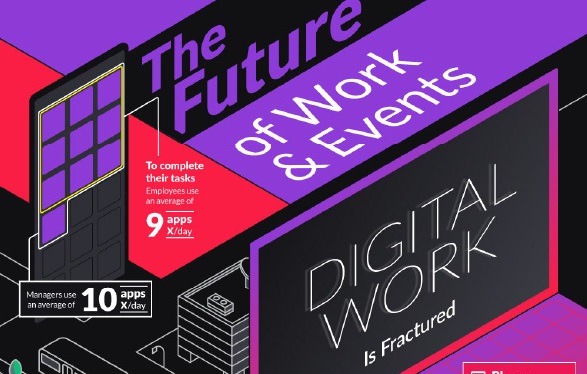Remote work has risen exponentially since the beginning of the COVID pandemic. Many businesses have slowly phased back into physical work. Still others retain at least some, if not all, remote workers. People, after experimenting in remote work, overwhelmingly like it. 73% of current remote workers want to stay doing remote work for the rest of their life.
And although the benefits are clear, the lack of travel, ease of access, and greater efficiency, there are downsides. Two of these rise to the forefront as unfortunate side effects of digital work. The first being the need to constantly switch between different apps while working.
The Current Remote Work Environment
Remote employees use an average of nine apps per day to get through their tasks. This is something that can really sidetrack employees and take away from their time working. Employees also end up having to check their phone and email messages constantly throughout the day, which produces anxiety and takes upkeep.
This is unfortunately only one contributor to the other major side effect of digital work, digital anxiety. Digital anxiety comes as a result of working and meeting in a digital context, and there are a few separate issues that are causing it’s overall harm.
First, there are some comprehensive things that all remote workers deal with. The lack of mobility that comes with working on a computer all day, the lack of social contact, the challenges of virtual communication, these are all expected things that have some solutions already. More challenging though are the issues that come with video calls.
Why are There So Many Video Calls?
Video calls and meetings take up to a third of 83% of remote employees’ work week. This is a sizable amount of time, and the average meeting takes 11 minutes to start. On top of that time though, 73% say at least one meeting per week is canceled or unnecessary, 56% think meetings consistently run too late, and 49% say they go to meetings that have no purpose.
This sets a bad precedent for how remote employees are going to feel in these remote meetings. 42% say they never contribute at meetings, and most employees just generally have a distaste for how meetings are carried out.
Now, there is a clear problem to be solved, and companies are taking different approaches to this problem. Some will simply opt to reduce meetings, others may work to make them more comfortable, and others yet have more abstract solutions. RedRex, for example, has proposed a digital workplace backed by real world attached NFT’s.
This workplace would be primarily for startups and more digital companies but could be used by any, the main appeal is that the digital workplace would have floors and rooms. This would more explicitly create places where things were meant to happen, people could have their doors “knocked” on and floors could be used for certain types of meetings.
In Conclusion
This would all work to reduce the digital anxiety of the remote workers using this digital workplace. Although it’s only one solution, it represents a company trying to address a problem that sits unaddressed by most. Remote work is a large market and only has room to go up.








